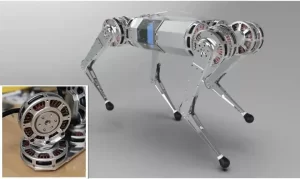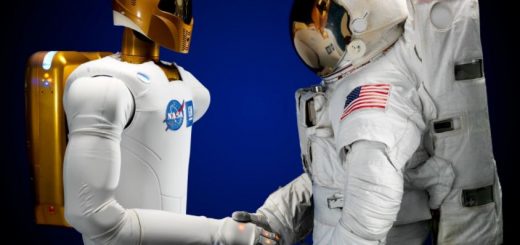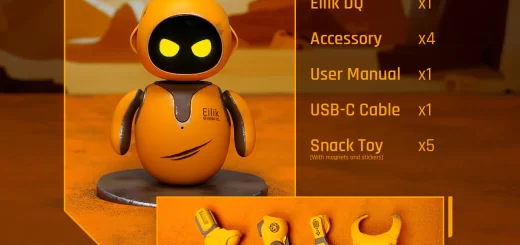Cheetah robot advantages and disadvantages, The fastest-legged robot on land
The Cheetah robot can perform backflips and other impressive maneuvers. Beyond military use, it has potential in search and rescue, disaster relief, and package delivery due to its speed and maneuverability.
Cheetah Robot
The Cheetah robot has some impressive nicknames, including “the Ferrari of the robot world” and “the robotic cheetah on the loose.” While not quite reaching the speed of its namesake, it can sprint at 29 mph (47 km/h). making it the fastest-legged robot on land.
Unlike many robots powered by loud engines, the Cheetah robots are battery-powered and nearly silent, making them ideal for research and exploration in sensitive environments, with the main noise being its feet hitting the ground. It can jump over hurdles up to 33 cm high and navigate uneven terrain.
The cheetah robot uses machine learning to adapt its gait and balance in real time, making it highly dynamic. Its design and movement are heavily inspired by the biomechanics of real cheetahs, including the use of a flexible spine. Its development was initially supported by the US Department of Defense for potential search and rescue applications.
This smaller version of the Cheetah robot is known for its impressive backflips and other acrobatic maneuvers. Its body is made of interchangeable parts, allowing for customization and easy repair. The design is publicly available, encouraging collaboration and further development.
Compared to the Boston Dynamics Cheetah, it’s significantly cheaper and more accessible for research purposes. This smaller version prioritizes agility and can perform backflips and other impressive maneuvers. Both robots draw inspiration from the cheetah’s flexible spine, powerful muscles, and efficient leg movements to achieve speed and agility.
The Boston Dynamics Cheetah has simulated “claws” that dig into the ground for extra traction. Both Cheetahs can navigate challenging terrain, including uneven surfaces and small obstacles, demonstrating their advanced balance and control systems.
Robots constantly learn and improve their movement thanks to sophisticated algorithms and machine learning techniques. They can adapt their gait in real-time based on the terrain and predict future movements for smoother running.
The Cheetah robots hold promise for various applications, including search and rescue operations in disaster zones, assisting soldiers in difficult environments, and developing prosthetics for humans. The Boston Dynamics Cheetah‘s top speed was achieved on a treadmill, not outdoor terrain.
While not quite reaching the real cheetah’s blistering speeds, the Cheetah robot can still zoom at an impressive 30 mph. It can sprint in short bursts, reaching up to 45 mph. This robot isn’t just fast in a straight line. It can jump over obstacles 33 cm high, navigate uneven terrain, and change its running style based on the situation.
The Cheetah‘s creators took inspiration from the real animal’s movements and muscles. This biomimicry approach makes it more efficient and agile than robots with purely mechanical designs. The Cheetah robot is constantly being improved. Researchers are working on making it more stable, and efficient, and adding features like vision and object recognition.
Cheetah robot advantages
The Cheetah robot is capable of reaching 30 mph with bursts up to 45 mph, the Cheetah surpasses most robots and outpaces humans. Its ability to jump obstacles and navigate uneven terrain adds to its versatility. Mimicking the cheetah’s musculoskeletal system, the robot achieves efficient and natural-looking movement, leading to better energy usage and maneuverability compared to purely mechanical designs.
Beyond military uses, the Cheetah has potential in search and rescue, disaster relief, package delivery, and scientific research requiring high mobility in challenging environments, showcasing its adaptability to various environments and tasks. The Cheetah serves as a valuable platform for researchers to test and refine concepts in robotics, including control algorithms, biomimicry, and dynamic-legged locomotion.
The cheetah robot is ideal for navigating challenging terrains and performing quick maneuvers. It is Inspired by the natural world, and its efficient movement and energy consumption surpass traditional robotic designs, making it more adaptable and useful for longer missions.
The Cheetah robot can run and jump over obstacles, surpassing human capabilities and exceeding most other robots. Its movement patterns and muscle structure mimic real cheetahs, resulting in efficient and agile movements.
Disadvantages of the Cheetah robot
Developing and maintaining the Cheetah is a complex and expensive endeavor, limiting its widespread adoption outside research and military applications. The cheetah can only carry small payloads, restricting its usefulness in tasks requiring significant cargo transportation.
While the Cheetah can handle some rough terrain, it still relies on relatively controlled environments and may struggle in extreme weather conditions or heavily cluttered spaces. Military applications of the Cheetah raise ethical concerns about autonomous weapons and the potential for misuse in conflict situations. concerns regarding safety and potential harm during research and development need to be addressed responsibly.
The development and maintenance of the Cheetah are expensive due to its complex design and cutting-edge technology. The robot‘s current design prioritizes speed and agility, resulting in a limited carrying capacity, restricting its use in certain applications. The Cheetah functions best on flat, open terrain and may struggle in dense environments or extreme weather conditions.
The Cheetah is still under development, and its full potential and limitations are yet to be fully explored. Its high-powered movements drain the battery quickly, restricting its operational time. Its current design might not be suitable for all terrains and weather conditions. Its speed and agility could pose risks in certain environments, requiring careful safety protocols.
You can follow science online on YouTube from this link: Science online
You can download Science online application from: Science online
kuri robot review, features, advantages, and disadvantages
Jibo robot advantages, disadvantages, features and What does Jibo robot do?
AIBI Pocket GPT Pet Robot review, use, advantages and disadvantages
Emo robot review, advantages, disadvantages, features and What can Emo do?
Ameca robot review, features, advantages, disadvantages and What can Ameca Do?
Eilik Desktop Companion Robot structure, features, use, advantages and disadvantages
Humanoid robots use, types, risks, advantages and disadvantages
Sophia robot review, features, use, advantages & disadvantages
Robot teachers use, types, advantages and disadvantages
Tesla robots (Optimus) review, use, advantages and disadvantages




